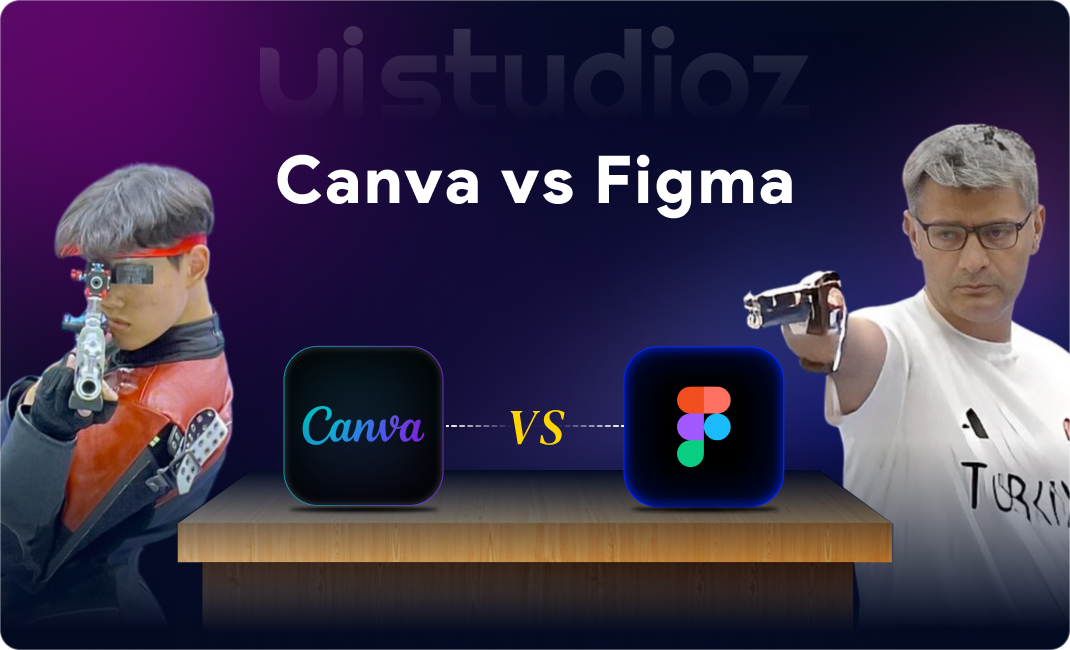Canva vs Figma: Which Design Tool is Right for You in 2025?

In the ever-evolving world of digital design, two platforms consistently stand out: Canva vs Figma. Both have empowered a vast range of users to bring their visual ideas to life. Choosing between Canva vs Figma depends on your specific needs and goals.
Understanding Their Core Purpose and Ideal User
To truly understand Canva vs Figma, examine their fundamental purpose and target audience.
Canva’s core mission is to democratize design for everyone. Its easy interface and templates help non-designers create visuals quickly. Ideal users include small businesses and social media managers.
Figma is built for professional UI/UX designers and teams. It focuses on interface design, collaboration, and advanced workflows. Ideal users are design teams working on digital products.
Key Feature Differences Explained
Let’s explore the key feature differences between Canva vs Figma with clearer distinctions.
Ease of Use
Canva offers a very intuitive, drag-and-drop interface, making it significantly easier for beginners to learn and use. Figma has a more complex, professional interface that requires a steeper learning curve. Canva’s “Magic Resize” for instant design adaptation is a unique advantage here.
Ready-Made Designs
Canva provides a vast library of templates suitable for almost any purpose, offering a quick starting point for many users. Figma focuses on UI kits and community files, which are more geared towards interface elements and design systems rather than broad template categories.
Vector Editing
Canva includes basic vector capabilities for simple adjustments to shapes and lines. Figma offers powerful and precise vector editing tools, comparable to dedicated software, providing much finer control for detailed graphics.
Collaboration
Canva allows for real-time co-editing and straightforward sharing of designs. Figma excels in advanced real-time collaboration, including version history, branching for design explorations, and shared component libraries for team consistency. Figma’s live cursors also enhance collaborative awareness.
Prototyping
Canva offers basic animation and the ability to link pages together for simple presentations. Figma provides comprehensive interactive prototyping, allowing for realistic user flow simulations with triggers, actions, and sophisticated transitions.
Design Systems
Canva offers basic branding features like saving color palettes and logos. Figma provides a robust component system and styles (colors, typography, effects) for creating and managing scalable design systems across large projects, including the “Variants” feature for managing component variations.
HTML & CSS Handoff
Canva’s web integration primarily involves embeddable graphics via iframes. Figma’s “Dev Mode” offers inspectable CSS properties, measurements, and exportable assets directly to developers, significantly streamlining the process of translating designs into code.
Offline Access
Canva is primarily a web-based application with limited offline functionalities. Figma offers desktop applications with the ability to work on previously opened files offline, providing more flexibility.
Ecosystem & Plugins
Canva has a growing app marketplace for integrations and additional features. Figma boasts an extensive plugin ecosystem that enhances its functionality for various specialized tasks, extending its capabilities far beyond Canva’s native features.
In short, Canva prioritizes simplicity and a wide range of templates for quick visual creation, while Figma offers professional-grade tools for UI/UX design, robust team collaboration, and efficient developer handoff.
How They Help with Websites (HTML)
When discussing website development with Canva vs Figma, the difference is clear.
Canva focuses on visual output; embedding is like showing a picture. It doesn’t provide the structural HTML of the website. Its strength lies in creating individual visual assets for websites.
Figma’s “Dev Mode” helps developers see CSS and measurements. This makes translating designs into HTML and CSS easier. Developers can inspect elements and export code snippets.
Figma acts as a detailed blueprint for website development. Canva mainly provides visual elements. Figma facilitates a smoother designer-developer workflow.
Making Your Choice in 2025
Ultimately, the decision between Canva vs Figma hinges on your individual or team needs and goals. Consider your design experience, project complexity, and collaboration requirements.
Choose Canva if:
- You prioritize ease of use.
- You need a vast library of templates for various marketing and personal projects.
- You require quick turnaround times for visual content.
- You don’t need advanced features for complex digital product design or extensive developer handoff.
- You’re a solo creator or small team with basic design needs.
Choose Figma if:
- You are a professional UI/UX designer working on websites, mobile apps, or other digital interfaces.
- You require advanced vector editing and prototyping capabilities.
- You need robust collaboration features for design teams.
- You prioritize a seamless workflow for translating designs into functional code.
- You work on complex digital product designs.
Both Canva vs Figma are valuable tools that have carved their own niches in the design landscape. By understanding their core strengths and limitations, you can confidently choose the platform that will best empower your creative endeavors in 2025 and beyond.
Ready to Explore the Possibilities?
Which design tool sparks your creativity? Share your experiences and preferences in the comments below!
Get Professional Design-to-Code Services
At Uistudioz, we specialize in Figma to HTML conversion services, ensuring a smooth transition from design to functional web pages. Our services include:
Need expert help? Contact Uistudioz for professional design-to-code solutions tailored to your business needs.